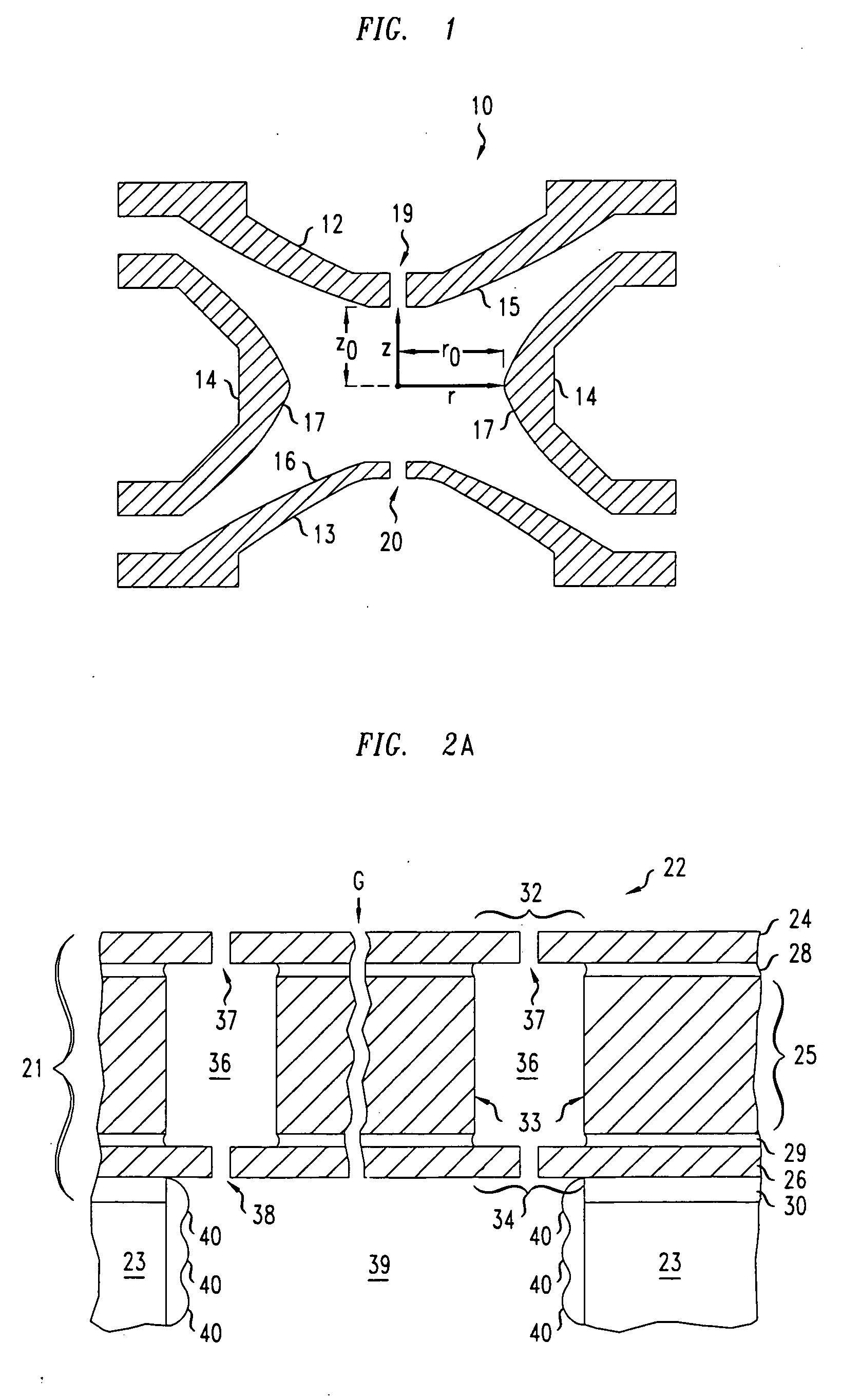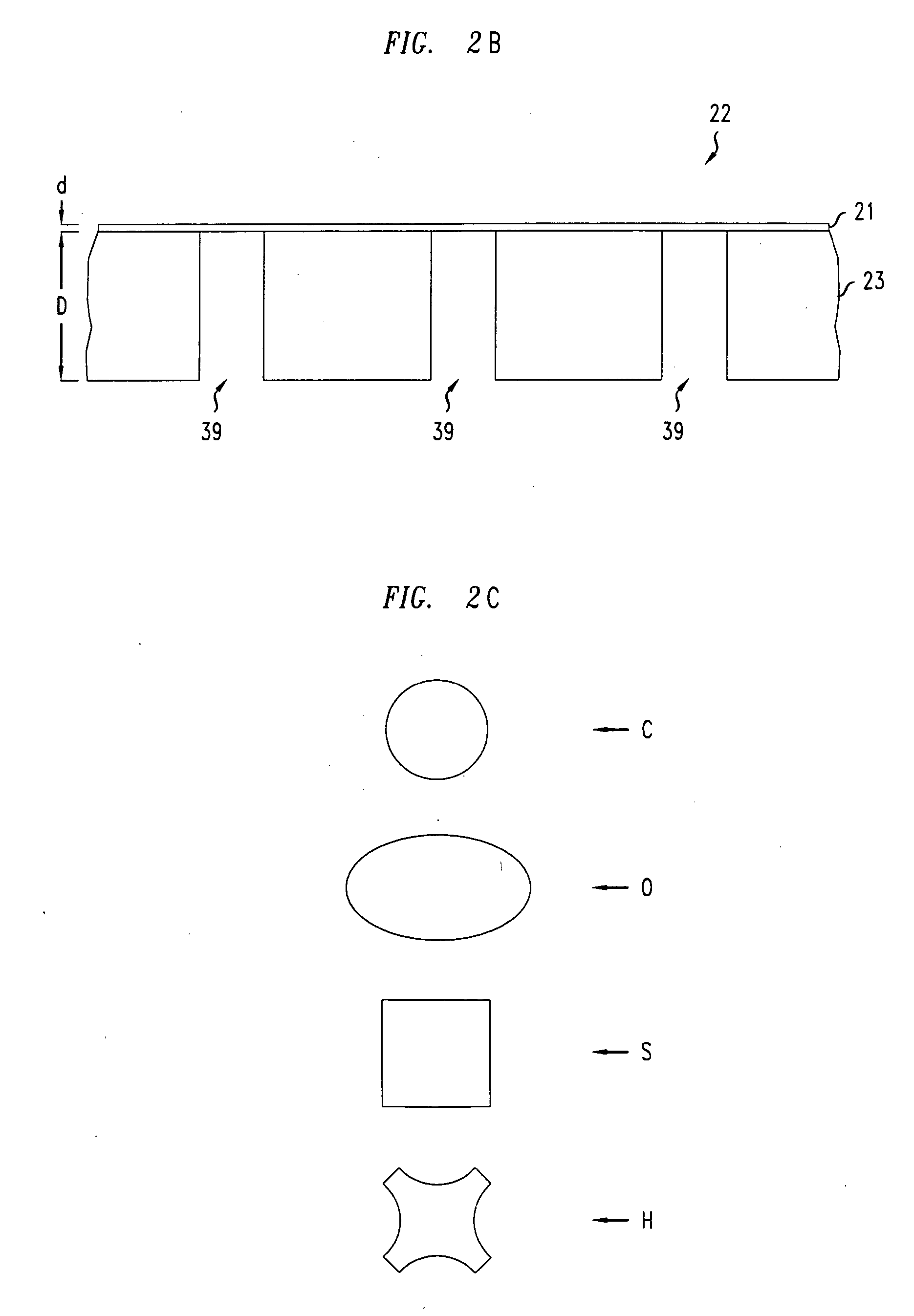Wafer-based ion traps
- Summary
- Abstract
- Description
- Claims
- Application Information
AI Technical Summary
Benefits of technology
Problems solved by technology
Method used
Image
Examples
example 1
[0043]FIG. 5 illustrates an exemplary method 50 for fabricating a monolithic structure 22′ with an array of micro-ion traps in accordance with method 41 of FIG. 3. The method 50 includes performing first and second sequences of steps I, II from respective front and back surfaces of a silicon (Si) support wafer 23. The steps produce structures 71-77, 22′ of FIGS. 6-13. In FIGS. 6-13, gap “G” indicates portions of the structures 71-77, 22′ that have been omitted for clarity.
[0044] From the front surface of the Si wafer 23, the method 50 includes performing the following sequence of fabrication steps.
[0045] First, a series of layer depositions on wafer 23 and a series of dry etches produces structure 71 of FIG. 6, which includes a sequence of layers (step 51). The sequence includes a conductive Al layer 90 and relatively thinner dielectric layers 91-92 that surround the Al layer 90. Lateral portions of the Al layer 90 will form bottom end cap electrodes of the final ion traps. The Al...
example 2
[0066] Another exemplary method for fabricating monolithic structure 22′ of FIG. 13 involves modifying method 50 of FIG. 5 by substitutions of different materials. The substitutions involve using doped polysilicon for conductive layers 90, 95, 102 and using either SiO2 or a spin on curable polymer for the sacrificial material of step 54. For such substitutions, the sequence of front side steps entails the following changes. The depositions for the conductive material of layers 90, 95, 102 involve performing plasma enhanced CVD depositions for polysilicon doped n-type or p-type with concentrations of 1019 or more dopant atoms per cm3. The dry etches that form features in the conductive material of the doped polysilicon layers 90, 95,102 involve performing conventional RIE plasma etches that are adapted to selectively remove polysilicon. The CMP for planarizing the top surface 101 of intermediate structure 74 of FIG. 9 uses a chemical polishing agent that selectively removes the SiO2 ...
PUM
| Property | Measurement | Unit |
|---|---|---|
| Height | aaaaa | aaaaa |
| Thickness | aaaaa | aaaaa |
| Electrical conductor | aaaaa | aaaaa |
Abstract
Description
Claims
Application Information
 Login to View More
Login to View More - R&D
- Intellectual Property
- Life Sciences
- Materials
- Tech Scout
- Unparalleled Data Quality
- Higher Quality Content
- 60% Fewer Hallucinations
Browse by: Latest US Patents, China's latest patents, Technical Efficacy Thesaurus, Application Domain, Technology Topic, Popular Technical Reports.
© 2025 PatSnap. All rights reserved.Legal|Privacy policy|Modern Slavery Act Transparency Statement|Sitemap|About US| Contact US: help@patsnap.com



